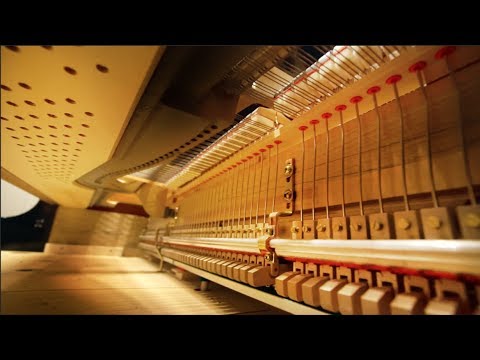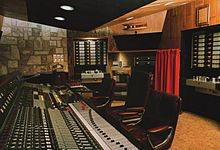Inside a Great Music Arrangement – Part One

I was going to title this series of articles Inside a Good Arrangement, but a lot of people can do a good, even fair arrangement. But, I’m on a quest for excellence, so let’s see how a great arrangement is made.
Asking what makes a good arrangement is like asking what makes a good ice cream flavor. It depends. While I was in college, the concert band director asked me to write an arrangement of the Star Spangled Banner for a brass quintet. I wrote an arrangement that I though was honoring to the song and the US, but with a few extra bits of color and movement. The director and the band didn’t like it! So, I did some revisions. They still didn’t like it. So I got angry and wrote the most middle-school type arrangement I could. They loved it! It depends on what you’re looking for.
While investigating the practicality of starting a music services business, I looked at what some other arrangers were doing. I found some interesting things. Some sites only discussed what arranging meant in a recording studio, which is a very limited view of arranging. Others started with arranging for four parts, which is good for beginners. There was one that described how to write close harmony, useful in a limited number of applications. I don’t believe that I saw any which dealt with how to arrange using polyphony or other layered sounds.
For the first part of this three-part article, we will examine recording music in a studio. Then, I’ll deal with live musicians playing from an arrangement. The second part of the series will discuss elements of arranging that apply no matter the reason for the arrangement. Then we will begin discussing three key elements for great music, Key, Motif and Form.
Arrangements for Recording Pop Music
A NOTE BEFORE WE BEGIN – This part of the article is based on a more traditional way of recording, that is, actually recording instruments. It refers sometimes to more modern methods to acknowledge that there is more than one way to create recorded music. I tend to prefer recording real instruments as much as possible because music is an expression of human spirit and emotion and cannot be found in electronic or mechanical devices. Throughout history, there have been many attempts to modify an instrument’s sound. An early example is a prepared piano, which is a regular piano that has had small chains, erasers or other items placed on the strings for an altered sound. There are all sorts of effects that have been used on instruments, guitars especially, and voices to change the sound. I have used quite a few of these, but the heart of the matter is that I altered a recording of a real instrument.
For the sake of this section, Pop Music refers to any style of music intended for or accepted by a wide audience, usually with a commercial basis, and distinguished from classical music and folk music.
Some of the websites and articles about arranging for pop music considered a good arrangement to be knowing which instruments and vocals to record first, second, etc. Very little consideration was given to exactly what each instrument would play. That might work if you were arranging for an established rock or country band in which everyone knew what the sound should be like and generally what to expect from the other members of the band.
In regard to what order to record the instruments and vocals, some will record the drums first, using drum machines with varying amounts of ability to be programmed. A live drummer, however, needs to work off of the vibe of the rest of the song. A relatively “old school” method is to record the rhythm section all together (rhythm guitar, piano or other rhythmic keyboard, bass guitar and drum kit or other main drum), then add things around that. A scratch vocal (someone sings the song just so that everyone else who records knows where the verses, chorus, etc. go) is always a good idea. There has been more than one instance of the scratch vocal being the “real” take, but don’t count on it.
But, even if someone has figured out what order to record everything, everyone still has to know what to play, from some source. And the producer, whether the band itself or someone with a lot of money, will decide if the arrangement is right for the song.
I’ve done some arrangements like that, but even in that context, there were some instrumentalists and singers who had to know more exactly what to play / sing. Often, an arrangement that has no specific things for musicians to play often sound mediocre at best. Even the Beatles did their own arrangements, not leaving anything to chance.
So, now that we’ve established that things can’t be left to chance, let’s talk about music that might take more than band members telling each other “Hey, dude, listen, I could go, like, Weeeee-oooo – ba-da-whack. Cool?”
If you listen to a lot of pop music, you’ll hear backup vocals, strings, horns, and occasional wood block, tambourine, etc. Some musicians, horn players and vocalists in particular, if they’re part of the band or have done a particular style of music for some time, can successfully improvise their parts.
That may work. However, if those parts need to be communicated to others, someone would need to know how to properly write what needs to be played or sung. Also, if the charts (printed music) are done beforehand, it might save time and money if someone who can read them would review them. It’s easier to rewrite some notes than to re-record horn or string parts, especially if the musicians have left the studio and the producer decides that he or she wants something different. In a studio, especially among rhythm players, the more common method of writing music is to use chords instead of notes. They are usually regular chord symbols (C, F, G, Am, etc.) or Nashville numbers, which uses common Arabic numbers to denote chords (1, -6, 4, 5, etc.). That way, if the musicians need to change key, they don’t need to rewrite the whole chart.

Arrangements for Live Musicians
It would be great if an arranger could simply write whatever he wanted, whatever would sound great in the music. But, alas, it’s not to be. Let me illustrate.
When I was in college, I did some arrangements for the pit orchestra for the Drama Department’s Speakeasy Night. When we started rehearsing a particular song, the whole clarinet section stopped midway through. When I asked them why they stopped, they pointed out that a particular passage that I had written was virtually impossible for them to play. When they showed me the fingering that they would have to do, I agreed, it did look impossible. We worked out a compromise part; it used all of the “important” notes in the impossible-to-play phrases, making it just as musical, without requiring sadistic fingering. It would have helped if I had been a lot more familiar with how a clarinet is played.
Another illustration. I had done an arrangement for church that included a basic piano part, melody and guitar chords. It also had a cello part for a beginner cellist. The part sounded good, but when I checked the fingering that would be required to play the part, I realized that it wouldn’t work, especially for a beginner. After fiddling for a few minutes to see if something else would work as well, I decided to simply move it up an octave. Ta-da! It sounded just as good, maybe better in that octave (it added a bit more brilliance there) and was very easy to play.
One last illustration. I was playing trumpet with a praise band. The leader decided to do a song that he usually used a capo on, on the fourth fret, while he played chords in the key of G. It put it in a key that was good for him to sing in. However, that put it in the key of C#. That would mean that I, the trumpet player, would have to play ALL notes sharped. By the way, I was playing from my head (no written music) AND was transposing up a whole step as I played. Not only was that a sadistic key to play in, even if it had been written down, but the fingering would have paralyzed me!
Simply put, an arranger has to remember that the arrangement is being done for live people. Keyboard, string and guitar players only have five fingers on each hand and they are only so long. Brass players’ lips can only vibrate just so fast or slow and they often are restricted to three fingers or, in the case of a trombone, a slide with somewhat limited range of motion. Instruments and voices have limitations in their ranges, especially if an arranger wants them to sound good. There may be other limitations to consider:
- A maniacally long run of eighth or sixteenth notes may be OK for a violinist or even a cellist. They can breathe any time they want while they play. Wind instrumentalists and singers can carry only so much air in their lungs.
- Brass players’ lips tend to give out, even among top pros.
- Wide skips may sound good, but there are limitations for fingers and lips.
In Part Two of this series, we’ll start with Arrangement Elements for More Professional Arranging. After that, we’ll examine four key elements for great arranging - Key, Motif, Form, and Intended Ensemble.
Salt Cellar Creations understands the challenges of composing and arranging for Concert Bands, Choral Groups and String Orchestras. We have a growing library of original works and arrangements that meet these challenges. Find out more about what Salt Cellar Creations has to offer for your ensemble HERE.
SCC can also compose an original piece for you or do a custom arrangement for you. There are two ways that this can be done; one is much more affordable than the other. And SCC is always looking for ideas of pieces to arrange or suggestions for original pieces.
We have sold music not only in the US but in Canada, the United Kingdom, France, Australia, and New Zealand. Please visit the WEBSITE or CONTACT US to let us know what we can do for you!